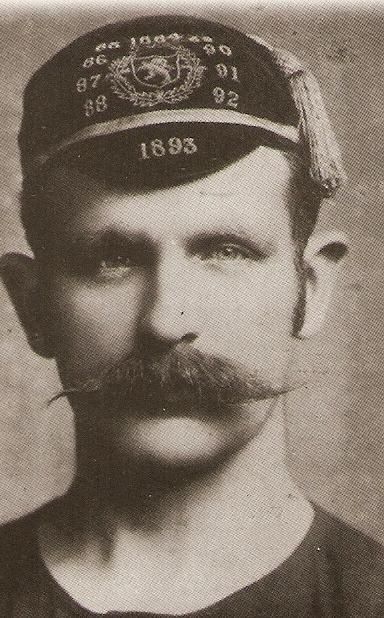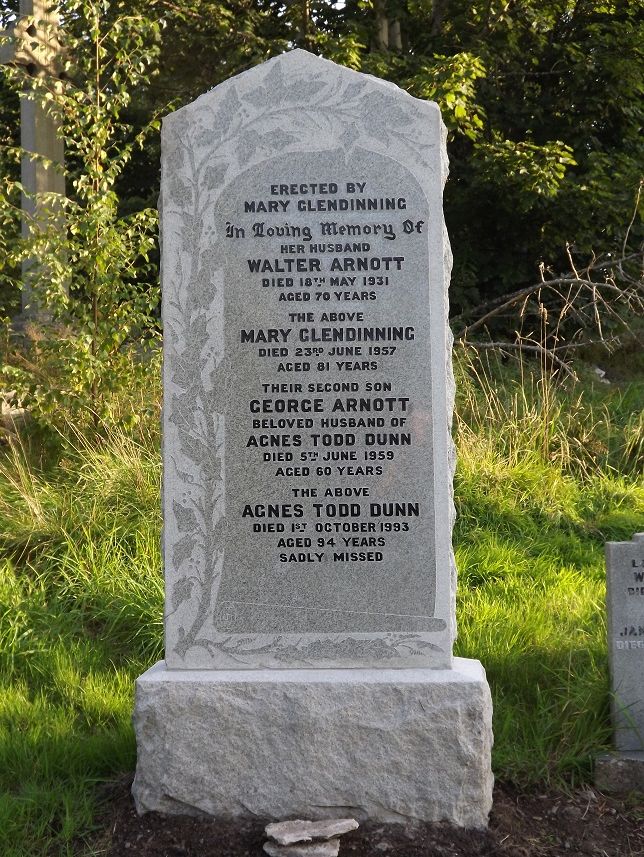Wattie Arnott

Walter "Wattie" Arnott was without one of the great full-backs, indeed players, of the second wave of Scottish, and therefore British, footballers. That he was awarded fourteen caps, in a period when only two and then three caps could be won a year, and that he played in ten consecutive Scotland-England encounters speaks both for his importance and the length of his international, never mind club career.
However, it was a football career not without controversy, in part because of that very longevity. It began, whilst still a teenager in Pollokshields, where in 1861 he was born and grew up, the son of a Stirlingshire-born Corn Factor, a grain dealer. In fact both his parents were Stirlingshire-born.
But Arnott's senior football career would begin in 1882 at the age of twenty--one with a move to Queen's Park. He is said to have arrived as the replacement of Andrew Watson, which seems unlikely. Whilst Watson could play on either side he was largely at right-back for club and country. Arnott was originally a left-back. Andrew Hair Holm was the Queen's Park left-back at the time but could also play on either flank and, when Watson did move on, he simply stepped across allowing Arnott in.
From that point, however, Wattie's rise was meteoric. He won his first caps in 1883 and alongside Hair Holm. He first played against England in 1884, incidentally at right-back, having just captained the national team against Ireland. However, whilst at national level Scotland prospered, at club level Queen's Park struggled somewhat. Between 1882 and 1886, when he was actually partnered at full-back by a returned Watson, they reached the Scottish Cup Final only once, the walk-over of 1884. And they would not do so again until 1890, by which time Scottish football was changing and Arnott was almost thirty. In fact, having briefly retired in 1888, he would play on until 1893 with Queen's Park until he fell out with the club over being dropped and then turned out for Edinburgh club, St. Bernard's, for another season. 1893 would also be the year of his last cap, a 5-2 gubbing by England, where, with the English left-winger, Fred Spikesley, scoring two late goals, both Arnott's age and his style of full-back play from an earlier era were exposed.
Throughout Arnott's golden footballing years he had worked first as a clerk, turning by the end of his playing career to quarrying and then the building materials' trade more generally, as a merchant and/or a contractor's agent. It would be work that would take him briefly to Belfast in 1891 and then, as a quarry foreman, to Kirkpatrick-Fleming in Dumfriesshire. There he met and in 1896 married Mary Glendinning. They would have four children, three boys and a girl, in Dumfriesshire and then back in Glasgow, where they would settle first in Mount Florida and then in Clarkston. From there he would pursue his other sporting interests, bowls, cricket, tennis yachting and curling. And it would be still in Clarkston that Arnott would die at the age of seventy in 1931, Mary outliving him by two and half decades.

Wattie Arnott was buried in Cathcart Cemetery. Mary would in time join him. But their lair was one of those, indeed one of far too many there, where the headstone had been allowed to topple. The grave itself also had a tree growing out of it. However, that bush has since been removed and the plot beautifully restored with now a fine upright stone as befitting a major, perhaps even the major player of the Golden Era of Scottish football and therefore the then World game.
Birth Locator:
1861 - Linden Terrace, Pollokshields, Glasgow
Residence Locations:
1871 - 2, Doon Terrace, Pollokshields, Glasgow
1881 - "Lorne Cottage", St. Andrews Rd., Pollokshields, Glasgow
1891 - Belfast
1896-1901- Kirkpatrick-Fleming, Dumfries-shire
1901 - "Under Newton", Kirkpatrick-Fleming, Dumfries-shire
1911 - 99, Dundrennan Rd., Mount Florida, Glasgow
1916 - 10, Carolside Ave., Clarkston, Renfrewshire
1921 - 10, Carolside Ave., Clarkston, Renfrewshire
1931 - 19, Carolside Ave., Clarkston, Renfrewshire
Death Locator:
1931 - 19, Carolside Ave., Clarkston, Renfrewshire
Burial Locator:
Back to Cathcart Cemetery,
or the SFHG Home page